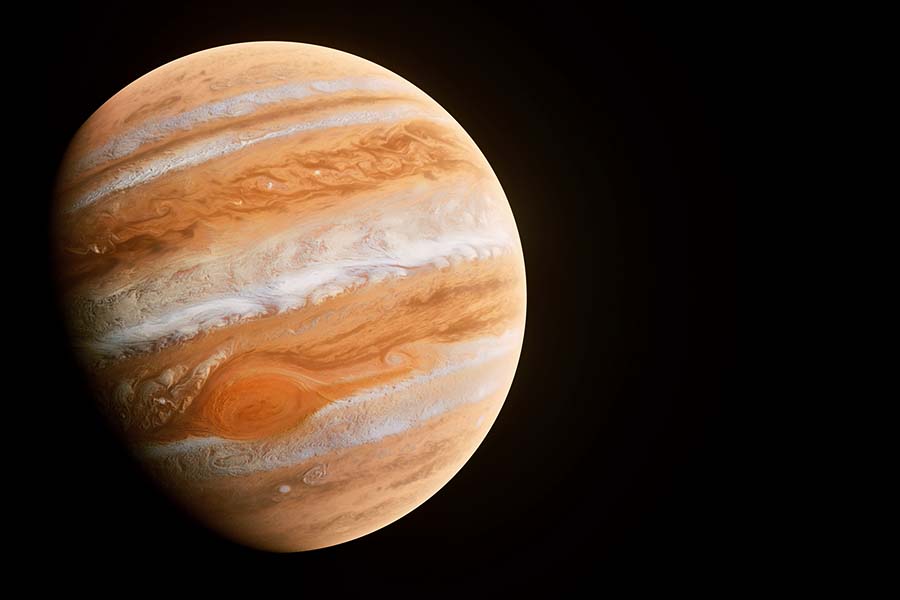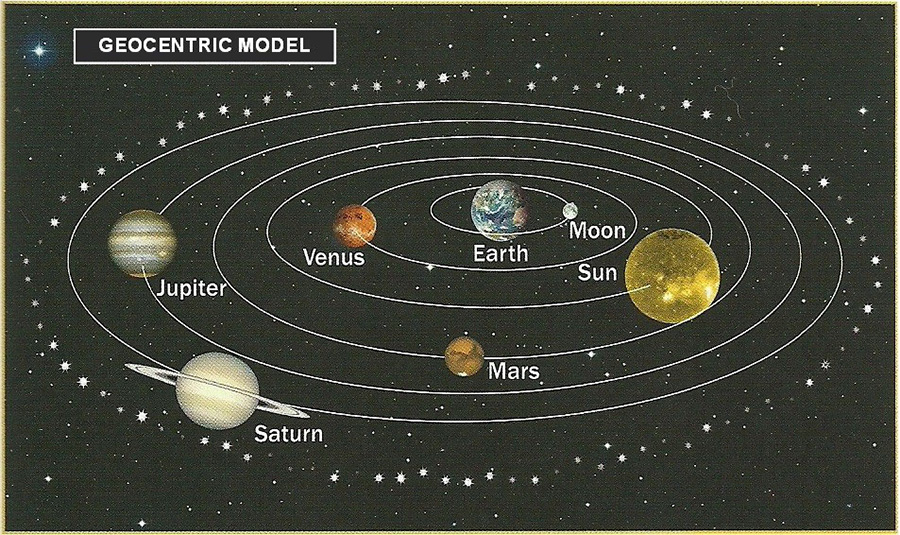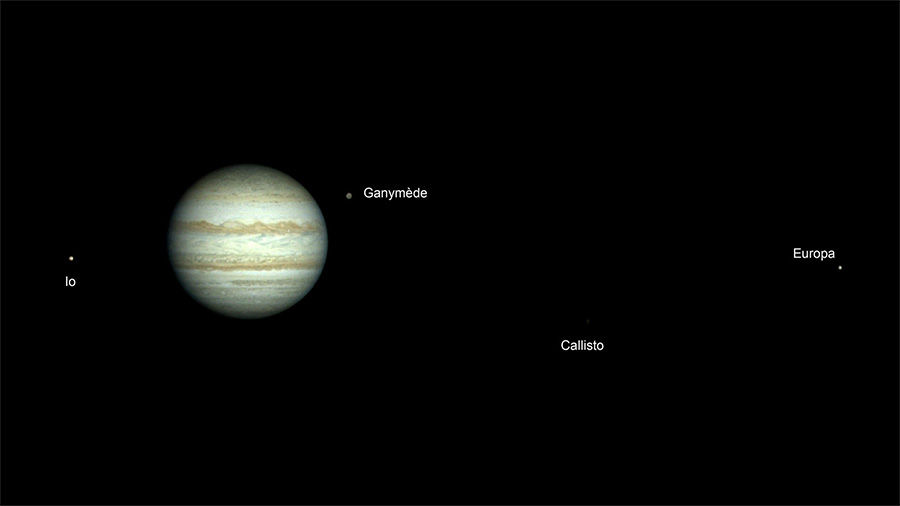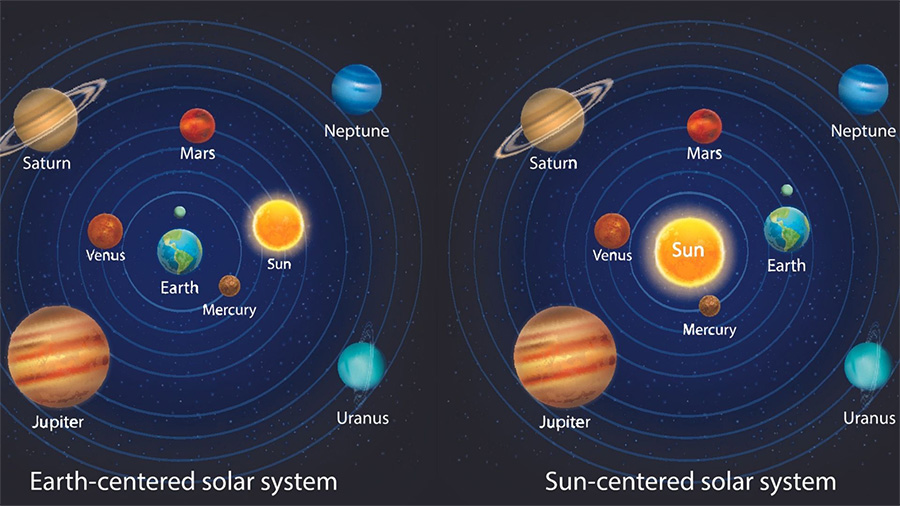Ancient people saw Jupiter in the sky for thousands of years. Its bright, moving light made it special to many cultures. They told stories and made it part of their religions. But no one really understood what Jupiter actually was until much later. It took people a long time to learn Jupiter is a gas planet orbiting our Sun– not just a bright light in the sky. That got us thinking: when was Jupiter discovered, and does it hold the first place for being not only the largest planet but also the first planet ever to be discovered?
Join us in looking back at when views of Jupiter shifted from just a bright spot in the sky to a whole different sphere from our own – an Earth peer captured in solar orbit.
When Was Jupiter Discovered?
Jupiter has been known since ancient times, so there isn’t a specific date for its discovery. People from various ancient civilizations, like the Babylonians and Greeks, observed Jupiter in the night sky because it’s one of the brightest objects. We can safely say that Jupiter lives up to its name. Even in Roman times, they knew seven bright objects, Jupiter included. Since they had no idea that Jupiter was a planet at the time, they named the bright light Jupiter after the king of the Roman gods.
However, detailed observation of the sky with telescopes in the 17th century allowed astronomers like Galileo Galilei to make detailed observations of Jupiter’s moons and their large size, providing a deeper understanding of the planet. It was not until 1610 that the first detailed observations of Jupiter took place.
So, while Jupiter was always visible, it was through advancements in technology that we learned more about its characteristics. The latest research suggests that Jupiter was the first planet to form in our Solar System.

Early Astronomers and Their Observations
Contributions of ancient civilizations in observing celestial objects
Ancient peoples watched the sky closely, and the motions in the sky held cultural and religious meanings. They built monuments aligned with solstices and star patterns. Basic cosmologies emerged from noting changes through seasons.
Keeping consistent records of celestial cycles enabled the prediction of eclipses and other foretelling signs for early cultures.
Role of early astronomers in laying the foundation for celestial studies
Pioneers of astronomy include Ancient Greek, Islamic, and various Asian cultures. These pioneers mapped star catalogs and planetary movements. They also tracked retrograde motion puzzles and developed geometrical models of orbits.
Passed down records over generations though limited by era’s tools. Despite limited optics, clever observations and geometric techniques characterized early astronomy foundations.
Ptolemy’s influence on early astronomical observations
Alexandrian astronomer Ptolemy codified understanding during Roman rule. His earth-centered model of nesting planetary spheres and epicycles became authoritative for 1400 years. Ptolemy relied on naked-eye observations only but somehow skillfully managed to calculate relative sizes/distances and orbital periods from data compilations.
We have to say, though, that given only naked eye data, some of Ptolemy’s calculations regarding planetary sizes and distances were inaccurate. Even though his proposed theory proved to be inaccurate, he laid the groundwork which opened the door for future astronomers to explore and make their own theories about the Solar System, and Jupiter. His proposed theory put the Earth as the center of the cosmos or universe, and the planets orbit around the Earth.
Significance of Ptolemy’s observations in understanding Jupiter
Even though he had limited ability to see Jupiter’s details without optics, as telescopes were yet to be discovered at the time, he accurately mapped its intricate looping path by collecting mass data. He made detailed observations of the brightness and magnitude of Jupiter.
He further used the concept of epicycles to account for the retrograde motion of Jupiter. Retrograde motion is the apparent backward movement of a planet against the background of fixed stars.
Ptolemy’s detailed observations and mathematical descriptions helped refine the geocentric model to better predict and explain the complexities of Jupiter’s movements as observed from Earth.

Galileo Galilei and His Telescopic Observations
Galileo Galilei’s role in advancing astronomical observations
Galileo, also known as the father of modern astronomy, pioneered early telescopic astronomy in the 1600s. He pioneered the experimental scientific method and was the first one ever to use a telescope for his astronomical discoveries. The invention of the Galilean telescope played an important role in the advancements in astronomy since astrologers could closely observe the far-away stars and planets in the cosmos. Not only that but with the invention of the telescope, Galileo laid the groundwork for the invention of more advanced telescopes.
Regarding the geocentric model, Galileo disproved Ptolomey’s model and supported the idea of Copernicus after investigating the planets with the help of his telescope. He supported the theory that the Earth and all the other planets revolved around the Sun. In simple terms, Galileo supported heliocentrism.
Overview of Galileo’s telescopic observations of Jupiter and its moons
Galileo made groundbreaking observations of Jupiter and its moons in 1610. He first aimed a telescope at Jupiter in 1610 and detected four orbiting points of light changing positions around the planet over days. He immediately came to the conclusion that the bright lights observed near Jupiter.
After closer analysis, he found that the lights were not, in fact, stars but 4 large moons orbiting Jupiter. These moons are now known as the Galilean moons: Io, Europa, Ganymede, and Callisto.
The realization that the moons orbiting Jupiter helped in his discovery that not all celestial bodies orbited the Earth, as the proposed Ptolomey’s geocentric theory. The presence of moons orbiting Jupiter contradicted the geocentric model, which held that all celestial bodies, including the Moon, orbited the Earth. This observation supported the heliocentric model, which proposed that celestial bodies could orbit other celestial bodies, including planets orbiting the Sun.
Galileo also made observations of Jupiter’s rotation. By tracking the movement of features on Jupiter’s surface, he noticed that the planet’s equator appeared to rotate faster than the polar regions. This was an important early observation of differential rotation in a planetary atmosphere.

Effects of Jupiter’s Discovery on Humanity
Broader impact of Jupiter’s discovery on society and culture
The discovery of Jupiter and its moons provided direct evidence for the Copernican model, which suggested that not all celestial bodies orbited the Earth. Instead, Jupiter’s moons demonstrated that moons could orbit planets, supporting the idea that Earth itself could orbit the Sun.
The discovery of Jupiter changed from remote light to a turbulent gaseous globe. Artistic works emphasized swirling storm features over the serene perfection of historical visions.
Symbolic importance of Jupiter in various cultures
Predating telescopes, Jupiter held divine connotations and symbolic importance in Babylonian, Greek, Roman, and other cultures throughout history. Before being classified as a planet, we already mentioned that Jupiter was the bright light many cultures swore on. Its prominence in the night sky and its unique characteristics have inspired diverse interpretations across different civilizations. But the name of the planet had a symbolic importance in various cultures.
Roman mythology
In Roman mythology, Jupiter was the king of the gods, equivalent to the Greek god Zeus. He was associated with thunder, lightning, and the sky. Jupiter was considered the chief deity and the protector of the Roman state. The name “Jupiter” itself is derived from the Latin word “Iuppiter,” which means god-father.
Greek mythology
In ancient Greek mythology, Jupiter’s counterpart was Zeus, the king of the Olympian gods. Zeus was associated with thunder and the sky, and he held a position of great authority and power. The name Zeus is believed to be related to the ancient Indo-European sky god, Dyeus.
Babylonian and Mesopotamian cultures
Jupiter was associated with the Babylonian god Marduk and the Mesopotamian god Enlil. These deities were considered supreme gods and were associated with aspects of the sky and weather.
Impact on Science and Astrophysics
Discussing the profound influence of Jupiter’s discovery on scientific thought
Finding moons orbiting Jupiter contradicted the notion Earth was unique and helped in the support of the Sun-centered model (heliocentrism) proposed by Copernicus, which overturned Ptolemaic dogma, dominating astronomy for 14 centuries.
Stimulated completely rethinking cosmic structures and our place within. Opened pathway for considering other worlds potentially harboring life. Meteorology developed through studying Jovian cloud cover shifts.

Advancements in astrophysics prompted by Jupiter’s observations
Studying lightning in Jupiter’s clouds provides models for understanding storm dynamics. Radio emissions mapped to visualize interactions with Io, moon and Sun.
Discovered water vapor hints and complex organic chemicals through spectrographic sampling of the atmosphere. Developed techniques later applied across star formation life cycles. Jupiter became the archetype for gas giant exoplanets in the cosmos based on signatures.
Contributions to the broader understanding of the solar system
As the largest planet, Jupiter helped establish baseline attributes of gas planets. Rapid rotation and retained moisture revealed key distinctions from smaller inner worlds.
Moons showcase mini solar system dynamics with potential underground water oceans. Provides shielding influence on asteroid bombardment of inner planets. Orbital resonance with Saturn hints at early migration models.
Conclusion
We hope peering through the lens of history has clarified that a definite answer to when was Jupiter discovered relies on redefining what discovery means across changing eras.
Ancient observers knew Jupiter as an ever-present point of light used for omens and calendar making. Galileo unveiled swirling moons, yet still thought smooth perfection resided underneath. Incrementally, findings accumulated depict an active world with its own seasons, storms, and mysteries.
This long chronology aims to shift perspectives on discovery from singular eureka moments to gradual revelations over generations. Moments have the power to rewrite the possible, revealing the unknown and expanding the meanings.
These moments are wrapped inside a steady light, silently traversing our sky. This phenomenon has been occurring since before eyes existed to watch its journey. What future discoveries await as we continue unwrapping Jupiter’s turbulent layers? The unveiling continues.
